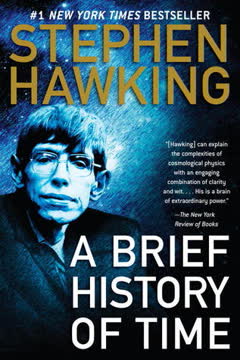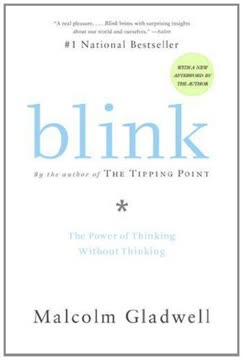重点摘要
系统1和系统2:两种思维模式
“系统1自动且快速地运作,几乎不需要努力,也没有自愿控制的感觉。系统2则分配注意力给那些需要努力的心智活动,包括复杂的计算。”
双过程理论。 我们的大脑使用两种不同的系统运作:系统1是快速、直觉和情感化的;系统2则较慢、更具深思熟虑和逻辑性。系统1不断生成印象、感觉和想法,而我们对此并不自觉。它负责诸如在空旷的道路上驾驶汽车或识别面部表情中的情绪等技能。另一方面,系统2在我们执行复杂的心智任务时被激活,比如解决一个困难的数学问题或比较两种产品的购买。
认知负荷和自我消耗。 虽然系统2更可靠,但它也更耗费心智且懒惰。当面对困难任务时,我们常常默认使用系统1的快速解决方案。当我们处于认知负荷或经历自我消耗——即在行使意志力后自我控制能力减弱的状态时,这种倾向会加剧。理解这些系统有助于我们识别何时可能会犯判断错误,以及何时需要启动更深思熟虑的思维过程。
启发法和偏见:心智捷径及其陷阱
“我们心智的一个普遍限制是其重建过去知识状态或已改变信念的能力不完美。”
认知捷径。 启发法是让我们快速做出判断和决策的心智捷径。虽然通常有用,但它们也可能导致系统性错误或偏见。一些常见的启发法包括:
- 可得性启发法:根据例子多么容易浮现在脑海中来判断事件的概率
- 代表性启发法:根据某事物与我们心智原型的相似程度来判断其概率
- 情感启发法:基于情感反应而非仔细分析来做决策
去偏技巧。 认识到这些偏见是减轻其影响的第一步。其他策略包括:
- 寻找反证
- 考虑替代解释
- 使用统计思维和基准率
- 采用决策框架
- 咨询他人以获得多样化的观点
过度自信和有效性幻觉
“个人对其信念的信心主要取决于他们能讲述的关于所见事物的故事质量,即使他们所见甚少。”
高估我们的能力。 人类往往对自己的判断和预测过于自信,常常忽视了机会和不确定性的作用。这种过度自信源于我们倾向于从有限的信息中创建连贯的叙述,以及我们无法识别自身知识的局限性。
计划谬误。 过度自信的一个具体表现是计划谬误,我们总是低估未来行动所需的时间、成本和风险。为应对这一问题:
- 使用“外部视角”来查看类似的过去项目
- 将复杂任务分解为更小、更易管理的部分
- 为意外的挫折预留缓冲时间和资源
- 定期重新评估并根据新信息调整计划
锚定效应:初始信息的强大影响
“锚定指数是衡量锚对估计影响程度的指标。100%的指数意味着估计等于锚,0%的指数则表示锚没有影响。”
锚定效应。 锚定效应发生在初始信息(通常是任意的)对后续判断和决策产生不成比例的影响时。这种效应在许多领域普遍存在,包括:
- 谈判(初始报价)
- 定价策略(建议零售价)
- 司法决策(量刑指南)
- 绩效评估(先前的评分)
减轻锚定效应。 虽然难以完全消除,但减少锚定影响的策略包括:
- 积极生成替代锚
- 考虑可能值的全范围
- 在做出判断前寻求额外信息
- 意识到潜在的锚并质疑其相关性
可得性和情感:情绪如何影响我们的判断
“我们头脑中的世界并不是现实的精确复制品;我们对事件频率的预期被我们接触到的信息的普遍性和情感强度所扭曲。”
可得性启发法。 我们倾向于根据例子多么容易浮现在脑海中来判断事件的概率。这可能导致风险评估的偏差,特别是对于生动或情感强烈的事件(例如,恐怖袭击与更常见但不那么戏剧性的风险如心脏病)。
情感启发法。 我们的情感反应常常引导我们的判断和决策,有时会牺牲更理性的考虑。这可以通过以下几种方式表现出来:
- 将问题的重要性与其情感唤起程度混为一谈
- 基于感觉而非统计数据进行风险评估
- 让当前情绪影响无关的判断
为对抗这些偏见:
- 寻求客观数据和统计信息
- 考虑多种观点和时间框架
- 意识到当前情绪可能对判断的影响
前景理论:重新思考风险和决策
“损失比收益更具影响力。”
损失厌恶。 人们通常对损失比对等值的收益更敏感。这种不对称性导致在收益领域的风险规避和在损失领域的风险寻求。例如,大多数人更喜欢确定获得900美元而不是90%的机会赢得1000美元,但也更喜欢90%的机会损失1000美元而不是确定损失900美元。
参考点和框架。 我们对结果的感知是收益还是损失取决于我们的参考点,这可以通过框架来操纵。前景理论的关键方面包括:
- 对收益和损失的敏感性递减
- 对低概率的高估和对高概率的低估
- 赋予我们拥有的物品比同等物品更高的价值(禀赋效应)
对决策的影响:
- 意识到问题的框架并考虑替代观点
- 尽可能关注最终状态而非收益或损失
- 使用广泛框架来聚合多个决策并减少损失厌恶的影响
框架效应:情境对选择的影响
“以不同方式呈现相同信息常常会引发不同的情感。”
展示的力量。 信息的呈现方式可以显著影响决策,即使底层事实保持不变。常见的框架效应包括:
- 属性框架:描述某物为“90%无脂”与“10%脂肪”
- 风险选择框架:以收益或损失的方式呈现选项
- 目标框架:强调采取行动的好处与不采取行动的成本
影响和缓解。 框架效应突显了我们偏好的构建性质和选择的可塑性。为了做出更一致的决策:
- 以多种方式重新框架问题以获得不同的视角
- 关注绝对结果而非相对变化
- 意识到语言和情境可能对你感知的影响
- 寻求客观信息和数据以补充框架化的呈现
沉没成本和心智账户:非理性的财务行为
“心智账户是一种狭窄的框架;它们通过有限的心智保持事物的可控和可管理。”
沉没成本谬误。 人们常常继续投资于失败的项目或坚持不愉快的经历,因为过去的投资,即使这样做是不理性的。这种倾向源于损失厌恶和避免承认错误的愿望。
心智账户。 我们倾向于根据资金的来源、预期用途或其框架来分类和对待金钱。这可能导致不一致的决策。例子包括:
- 以不同方式对待“意外之财”和赚取的收入
- 更愿意从某些账户(如度假基金)中花钱而不是其他账户
- 单独评估财务决策而不是考虑整体财富
为了改善财务决策:
- 关注未来的成本和收益,忽略沉没成本
- 采用更广泛的财务视角,考虑金钱的可替代性
- 使用预算和跟踪工具以获得更全面的财务图景
- 定期重新评估财务目标和策略
聚焦错觉:高估我们正在思考的事物的重要性
“生活中没有什么比你在思考它时认为它重要。”
注意力和重要性。 我们倾向于高估我们当前关注的事物的影响,无论是个人品质、生活事件还是产品特征。这导致对未来幸福的错误预测和偏见的决策。
减轻聚焦错觉:
- 考虑多种因素对结果或幸福的贡献
- 寻求多样化的观点和意见
- 使用鼓励全面评估的决策框架
- 练习正念以更好地意识到注意力偏见
- 推迟重要决策以允许更广泛的视角出现
选择架构:设计更好的决策环境
“选择架构师有责任组织人们做出决策的情境。”
助推和默认选项。 选择的呈现方式可以显著影响决策,而不限制选择自由。有效的选择架构包括:
- 设置智能默认选项
- 提供决策反馈
- 结构化复杂选择
- 创建激励
- 使用社会规范
伦理考虑。 虽然选择架构可以用来促进更好的决策,但它也引发了关于家长主义和操纵的问题。伦理选择架构的关键原则包括:
- 对助推及其预期效果的透明度
- 简单的退出机制
- 将助推与被影响者的利益对齐
- 根据结果定期评估和调整选择架构
通过理解和应用这些原则,我们可以创建支持更好决策的环境,同时尊重个人自主权。
最后更新日期:
FAQ
What's Thinking, Fast and Slow about?
- Two Systems of Thinking: The book explores System 1, which is fast, automatic, and intuitive, and System 2, which is slower, deliberate, and analytical. These systems shape our judgments and decisions.
- Heuristics and Biases: Kahneman discusses cognitive biases arising from heuristics—mental shortcuts that simplify decision-making but can lead to errors.
- Impact on Economics and Psychology: The book bridges psychology and economics, challenging traditional rational agent models and offering insights into human behavior.
Why should I read Thinking, Fast and Slow?
- Understanding Human Behavior: It provides insights into cognitive processes that drive decisions, essential for psychology, economics, or behavioral science enthusiasts.
- Practical Applications: Kahneman offers advice on improving decision-making by recognizing biases, applicable in personal and professional settings.
- Award-Winning Author: Written by Nobel laureate Daniel Kahneman, the book is backed by extensive research and real-world examples.
What are the key takeaways of Thinking, Fast and Slow?
- Cognitive Bias Awareness: Recognizing biases like overconfidence and loss aversion can help improve decision-making.
- Role of Emotion: Emotions significantly influence decisions, often overriding logic, leading to more informed choices.
- Decision-Making Frameworks: Introduces frameworks for understanding decisions, including heuristics and framing, applicable in various contexts.
What is the difference between System 1 and System 2 in Thinking, Fast and Slow?
- System 1 Characteristics: Operates automatically and quickly, responsible for intuitive judgments and emotional responses.
- System 2 Characteristics: Allocates attention to effortful activities, slower and more deliberate, requiring conscious effort.
- Interaction of Systems: System 1 generates impressions, while System 2 may endorse or rationalize, leading to potential judgment errors.
How does Thinking, Fast and Slow explain cognitive biases?
- Systematic Errors: Cognitive biases are systematic errors due to shortcuts taken by System 1, leading to flawed judgments.
- Examples of Biases: Includes the halo effect, confirmation bias, and conjunction fallacy, affecting perceptions and decisions.
- Awareness and Mitigation: Kahneman encourages awareness of biases and questioning intuitive judgments, especially in high-stakes situations.
What is the availability heuristic in Thinking, Fast and Slow?
- Definition: A mental shortcut relying on immediate examples that come to mind when evaluating a topic or decision.
- Influence of Media and Experience: Can lead to biases based on recent experiences or media coverage, skewing judgment.
- Practical Implications: Recognizing this heuristic helps in making more rational decisions by being aware of skewed judgments.
What is loss aversion in Thinking, Fast and Slow?
- Definition: Loss aversion is the principle that losses have a greater emotional impact than equivalent gains.
- Impact on Decision-Making: Leads to decisions prioritizing loss avoidance, often resulting in overly cautious behavior.
- Practical Implications: Recognizing loss aversion helps in making better decisions by accounting for this bias in risk assessments.
What is the planning fallacy as described in Thinking, Fast and Slow?
- Definition: The tendency to underestimate time, costs, and risks of future actions while overestimating benefits.
- Inside vs. Outside View: Contrasts focusing on project specifics with statistical information from similar past projects for realistic assessments.
- Consequences: Can lead to cost overruns and failures; using reference class forecasting improves prediction accuracy.
How does framing affect decision-making in Thinking, Fast and Slow?
- Definition: Framing refers to how information presentation influences perceptions and decisions.
- Examples: Different preferences arise from framing, like preferring "90% survival rate" over "10% mortality rate."
- Implications: Crucial for effective communication in marketing, public health, and policy-making, aligning information with desired outcomes.
What is the endowment effect as explained in Thinking, Fast and Slow?
- Definition: The phenomenon where people value owned items more than equivalent non-owned items.
- Example: Illustrated by a coffee mug experiment, showing ownership alters perceived value.
- Implications: Challenges traditional economic theories, highlighting psychological factors in economic behavior.
What is the concept of the "two selves" in Thinking, Fast and Slow?
- Experiencing vs. Remembering Self: Distinguishes between the present-focused experiencing self and the reflective remembering self.
- Decision-Making Implications: Decisions often based on memories, not current experiences, affecting happiness evaluations.
- Importance: Recognizing both selves aids in making choices aligning with true well-being, considering immediate and long-term reflections.
What are some best quotes from Thinking, Fast and Slow and what do they mean?
- “Nothing in life is as important as you think it is while you are thinking about it.”: Highlights overemphasis on immediate thoughts, leading to distorted perceptions.
- “We are prone to overestimate the likelihood of rare events.”: Encapsulates the possibility effect, emphasizing misjudgment of probabilities.
- “The confidence that people have in their intuitions is not a reliable guide to their validity.”: Cautions against overconfidence, reminding that high confidence doesn't equate to accuracy.
评论
读者们称赞《思考,快与慢》对人类决策过程的深刻见解。许多人认为这本书令人耳目一新且具有变革性,欣赏卡尼曼能够用通俗易懂的语言解释复杂的概念。尽管有些读者觉得这本书内容密集且具有挑战性,但大多数人认为付出的努力是值得的。批评者指出,这本书有时会显得重复且过于技术化。总体而言,它被广泛认为是行为经济学和心理学领域的开创性著作,提供了理解和改善思维过程的宝贵工具。


















